Figure#5 (2024) portrays a sculpture of a figure that looks to be tormented and fragmented as though it is in anguish and screaming out as its head is ripped out and has exploded right out of the sculpture. There are claw marks etched within the surface of the material used for the sculpture, which could suggest that there is self-inflicted harm – both (as with the exploding mind) are physical and mental, symbolising the existentialistic pain and self-torment often associated with mental illness.
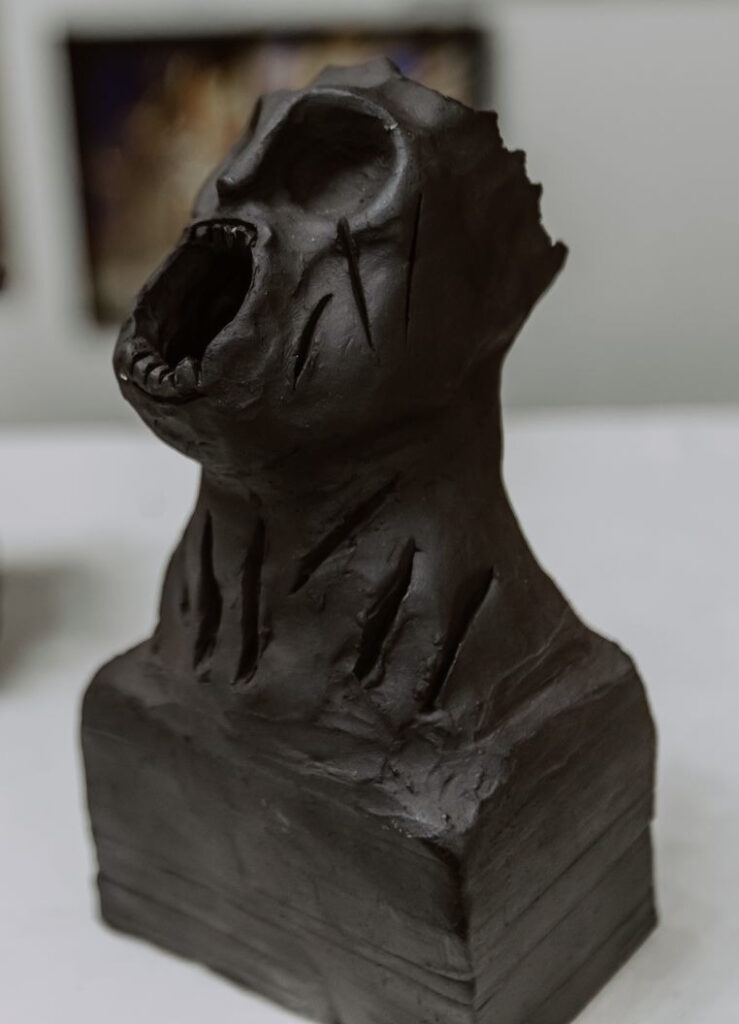
These deep wounds within the surface seem to have become one with the figure, as though the figure is unravelling its existence due to these intense self-destructive emotions. The mouth looks as though it is screaming out in pain – yet it is hollow, suggesting it is a silent scream proclaiming mental distress. The figure is isolated within this suffering due to this silence while it has lost control (the exploding mind) of its thoughts as they spiral out. These features allow the viewer to understand that mental health is often invisible and to recognise these struggles.
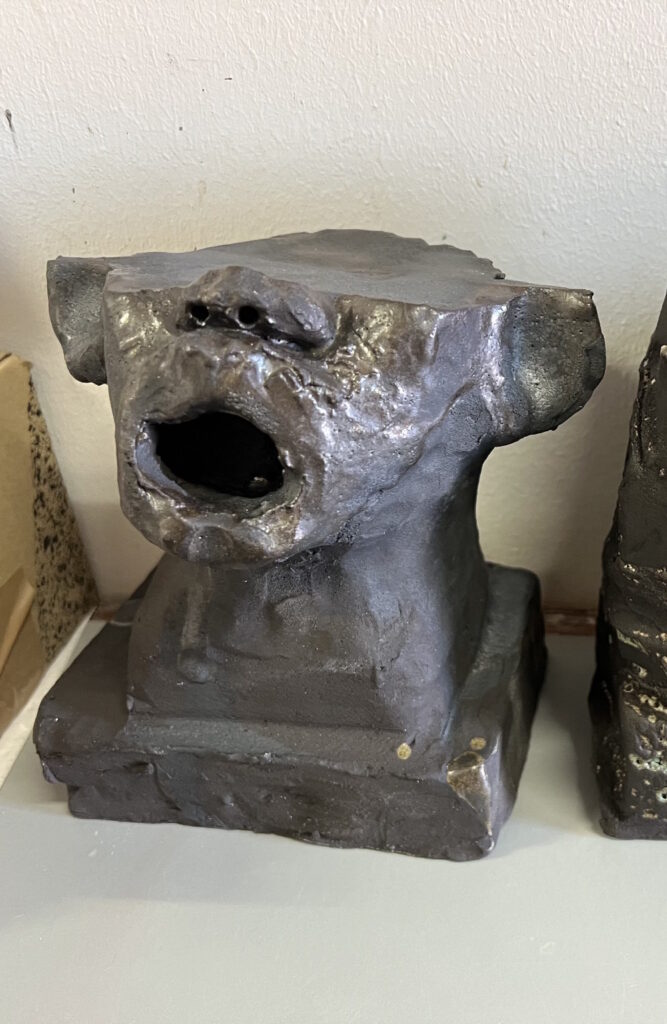
Figure#8 (2024) continues this exploration of mental illness and explores the themes of dissociation and isolation among its many parts. This figure has the top of its head removed, which implies loss and isolation. The figure itself may feel as though it is detached from its own identity or surroundings; hence, it is dissociated. The removal of the mind (the top half of the head) makes the figure incomplete- the removal also could represent mental fog and the detachment that oftentimes is symbiotic with depression and anxiety.
This incompleteness of the sculpture invites the viewer to question themselves in terms of their mental state. The work serves as a form, as the other sculptures do, of art therapy, as it allows the viewer to know that it is a human element to suffer mentally and that there is nothing wrong. Thus, as it is not an identifiable figure, it instead serves as a metaphor for what all humans suffer through. Hence, it allows the viewer to put themselves into the sculpture.
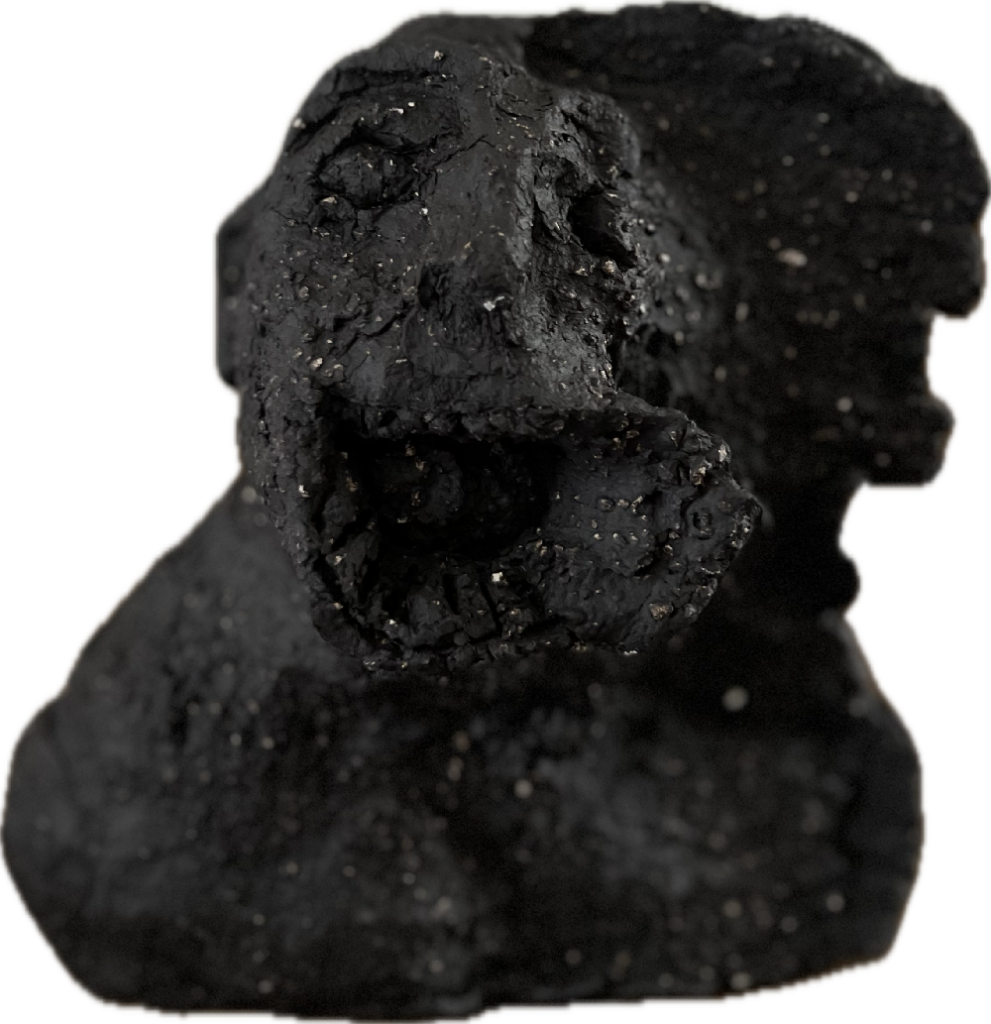
Figure #6 (2024) is much more aggressive than the previous works we’ve covered- it seems it has been disintegrated. The sculpture’s surface is blackened and brittle- giving it a scorched look like the figure has internally combusted. Therefore, the sculpture is eroded, and its appearance symbolises the loss of identity and self-awareness. On the figure, the eyes appear as though they have been removed- which allows the viewer to look into the soul of this figure and to realise its emptiness.
The sculpture also looks as though it is flaking off and falling apart, which shows the continuing vulnerability of mental illness and the feeling that it gets worse and worse. The flaking strips the figure of its humanity and leaves it feeling as though it is no longer human- thus not being only detached from its reality.
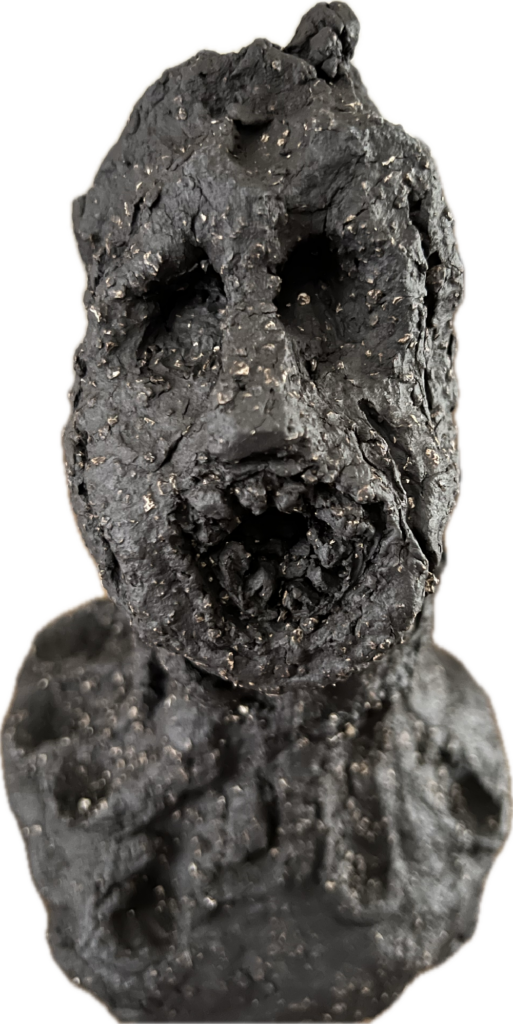
Figure #4 (2024) stares at us in terror- it appears as though it cannot move, and the teeth of this figure look to be scrunching into themselves as though their face is cowering from itself. The sculpture draws us into the depressive state where it has frozen and become trapped within its mind. The work’s texture and tormented features make it seem as though it has an anxiety or panic attack where it can’t breathe any more as everything feels exhausting and suffocating.
The figure, trapped in its mind and cannot escape, takes the viewer and encourages a reflection from the viewer on both their own personal and the collective experience of mental suffering and being isolated. As most of us may have experienced depression- the work thus showcases itself as a mirror into our minds and to validate that we are not alone in this fight against our mental issues.
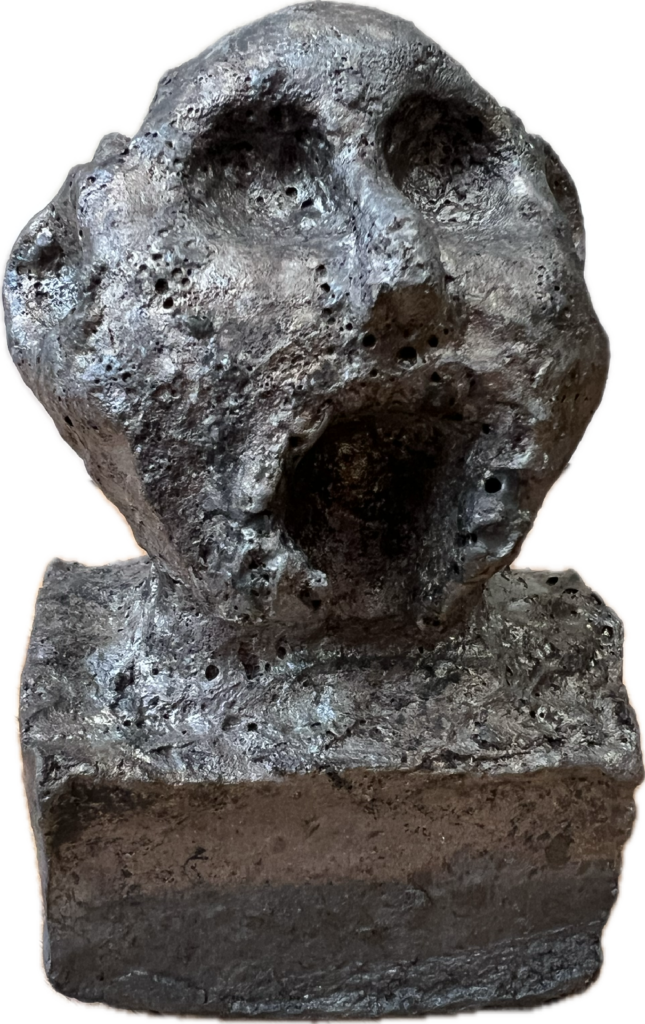
Figure #7 (2024) looks as though it is both metallic and rock simultaneously; it seems it has been melted and burnt after cooling. This creates an eroded stone-like appearance that is rugged and fractured. As though this has happened due to the emotional weight it suffers from, yet it cannot express or unleash these feelings. The figure is shrieking and screaming from its mouth, yet the inside shows no tongue, which removes the ability to speak or scream.
Overall, these works- featured in the publication allow the viewer to see a mental mirror of themselves within the context of mental illness and depression. The sculptures go from different emotions found within mental illness- isolation, despair, rage, anger, dissociation and the loss of self-awareness that oftentimes are the side effects of depression and mental illness.
All sculptures have rough textures, and their eyes seem to have been gouged out of their faces with the mouths which are screaming in agony. The screaming of these sculptures has successfully captured the trauma and fear that mental illnesses impose on us as we suffer through them and thus become a conversation between the sculpture and the viewer. The viewer is encouraged that this is normal and that everyone may go through this, allowing the viewer to reflect and acknowledge that they are not alone.
